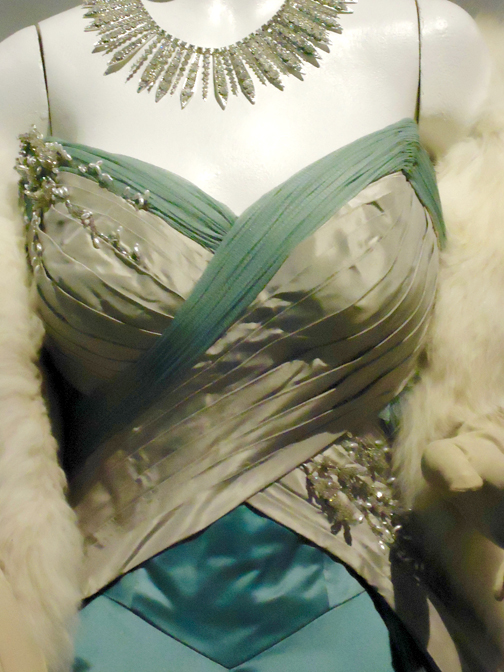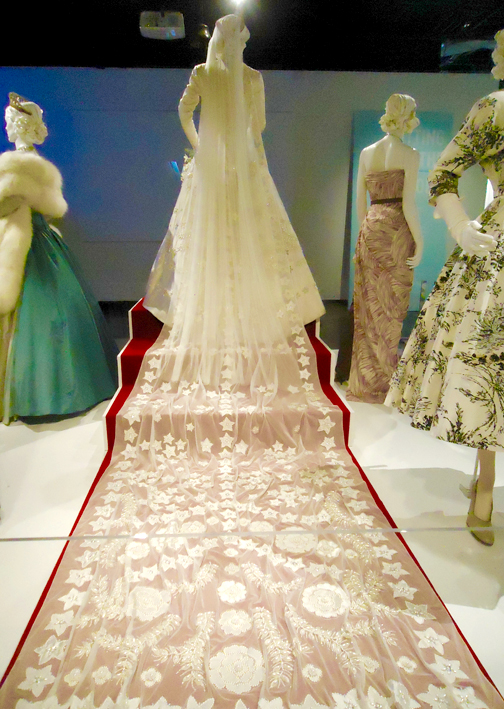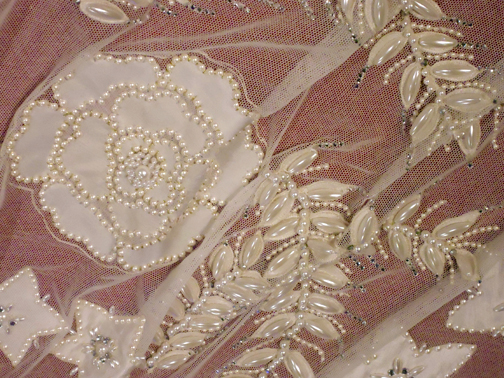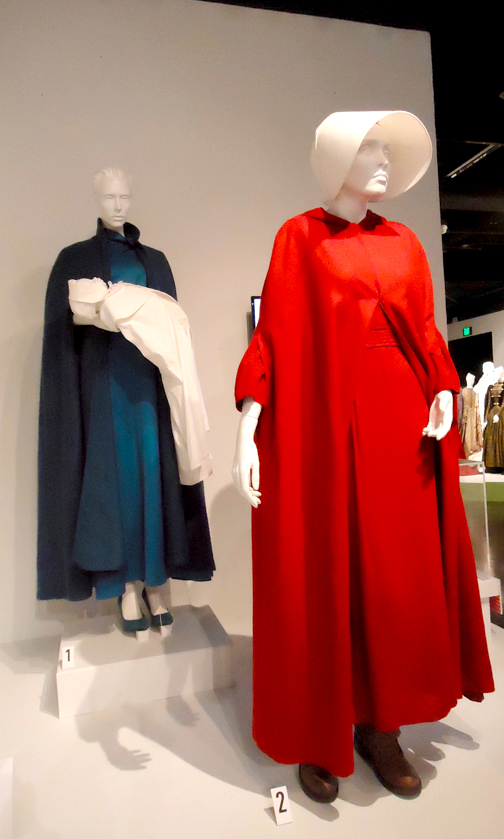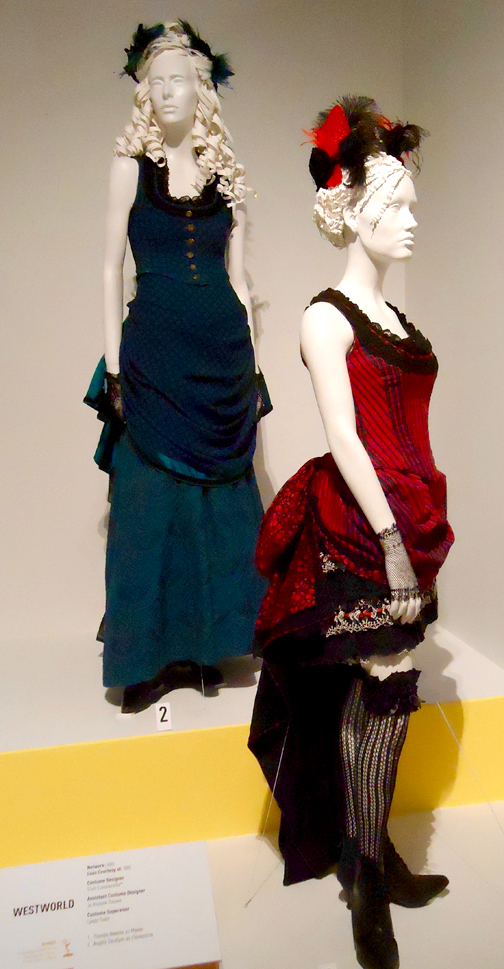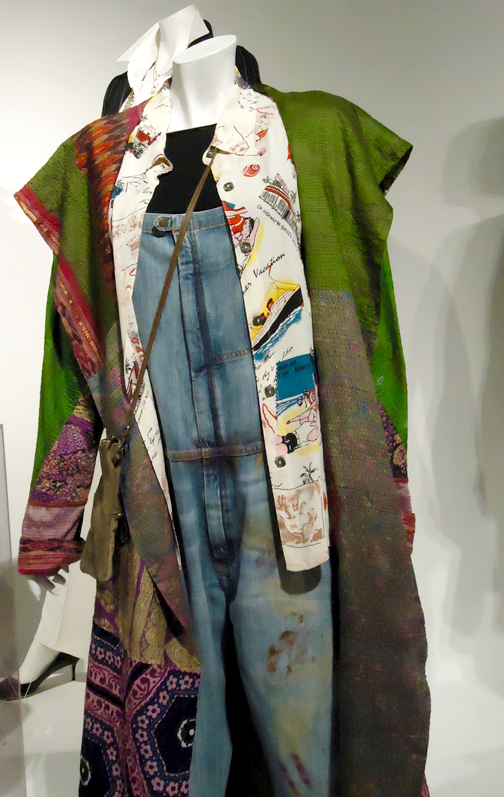
By Susan JAMES
The 11th annual presentation of the Art of Television Costume Design is on display now at the Los Angeles Fashion Institute of Design and Merchandising (free to the public). Open through Oct. 7, the exhibition showcases over 100 costumes from 25 television shows, including the nine nominees from three costume categories: contemporary, period and fantasy and reality and variety. For the first time, the costume category has been divided into three parts allowing for more nominees and a more balanced costume competition.
On a guided tour of the exhibition by the incomparable Nick Verreos (fashion designer and commentator), we were treated to a veritable cornucopia of fashion insights and details. “The Crown,” a dramatization of the young Queen Elizabeth II on Netflix and one of the Emmy nominees, offered some exquisite recreations of iconic looks from the history books. Elizabeth’s wedding gown, the original designed by Norman Hartnell, is one of the signature pieces in the FIDM exhibition. When Elizabeth married Prince Phillip shortly after the end of World War II, clothing rationing was still in effect and the white satin for her wedding gown had to be bought with clothing coupons.

Designer Michele Clapton has recreated the fairytale look that required 60,000 pearls for the ethereal gauze train and which took six people nearly seven weeks to hand-embroider. Clapton’s favorite part of designing for the show was the clothing she created for Vanessa Kirby’s Princess Margaret. According to Verreos, Margaret was more playful in her dress using colors and prints, a fashion forward Princess Diana from an earlier time.

Two tinsel town queens, Bette Davis (played by Susan Sarandon) and Joan Crawford (played by Jessica Lange), chewed up the scenery in the FX series, “FEUD: Bette and Joan,” with costumes by Lou Eyrich. To recreate Edith Head’s signature 1963 Oscar look for Crawford, Eyrich had to dip-dye white satin to get the perfect silver tone, line it with silver and add extra beading above the waist. The finished product was so heavy that Eyrich had to create an under-corset for actress Jessica Lange to support her back.
Ane Crabtree, who designed the striking looks for Margaret Atwood’s “The Handmaid’s Tale,” told Verreos that she got the inspiration for the Hulu series’ red robes by watching a priest walking in the Duomo in Milan as he kicked out his red cassock and created a bell-shaped look that she copied. The Renaissance-looking cap worn by the series’ women was meant to represent blinders where female vision was circumscribed by the roles male society forced them to play. Picking up on that same theme are Trish Summerville’s costumes for HBO’s “Westworld,” another nominee, where women’s roles have been taken into the future and rendered as androids created solely to obey human masters.

Two of the nominees in the contemporary category are Alix Friedberg’s looks for the who-done-it, “Big Little Lies.”
“The costumes,” Verreos remarked, “are a second skin to an actor used to define the character.”
This was especially true in Allyson B. Fanger’s striking costumes for “Grace and Frankie.” Fanger dressed the buttoned down Grace (Jane Fonda) in edited black and white – chic but understated. The more flamboyant Frankie (Lily Tomlin), was put in a boho layered Lagenlook, a fashion style wildly popular in Germany and catching on with teens and millennials here. Her clothing sets up the character’s backstory, with a kimono over a Hawaiian shirt over denim over a T-shirt featuring a mug shot of Willie Nelson.
Costumes for variety or reality shows include incredible beaded looks for ABC’s “Dancing with the Stars.”

“Ten contestants dance 10 dances every week,” Verreos told me, “adding up to 100 costumes a week that have to be produced from scratch. Show designers Steven Norman Lee and Daniela Gschwendtner order 20,000 beads a week for them and that keeps Swarovski in business.”
Mary Vogt, designer for NBC’s “Hairspray Live,” had other challenges. Filmed live and outdoors, the costumer had to prepare clothing that could be stretched, rained on and changed in a second. She put gussets in the inside leg seams of the men’s trousers and during rehearsal begged the dancers to try and split them if they could.

Production of the costumes for the third show in this category, “RuPaul’s Drag Race,” designed by Zaldy, is a high wire act. Zaldy lives in New York while the show is shot in Los Angeles. The dresses arrive on the day of taping and must fit like a glove.
“There is a little wiggle room,” Verreos confided. “Sometimes the shoulder straps are safety-pinned so they can be adjusted.”
Whether it’s kickback contemporary, diva drama from long ago or glitter and glam from today’s reality, the exhibition at FIDM is one not to miss.
The exhibition is open Tuesday through Saturday from 10 a.m. to 5 p.m. at FIDM Museum, 919 S. Grand Ave. in Los Angeles.

